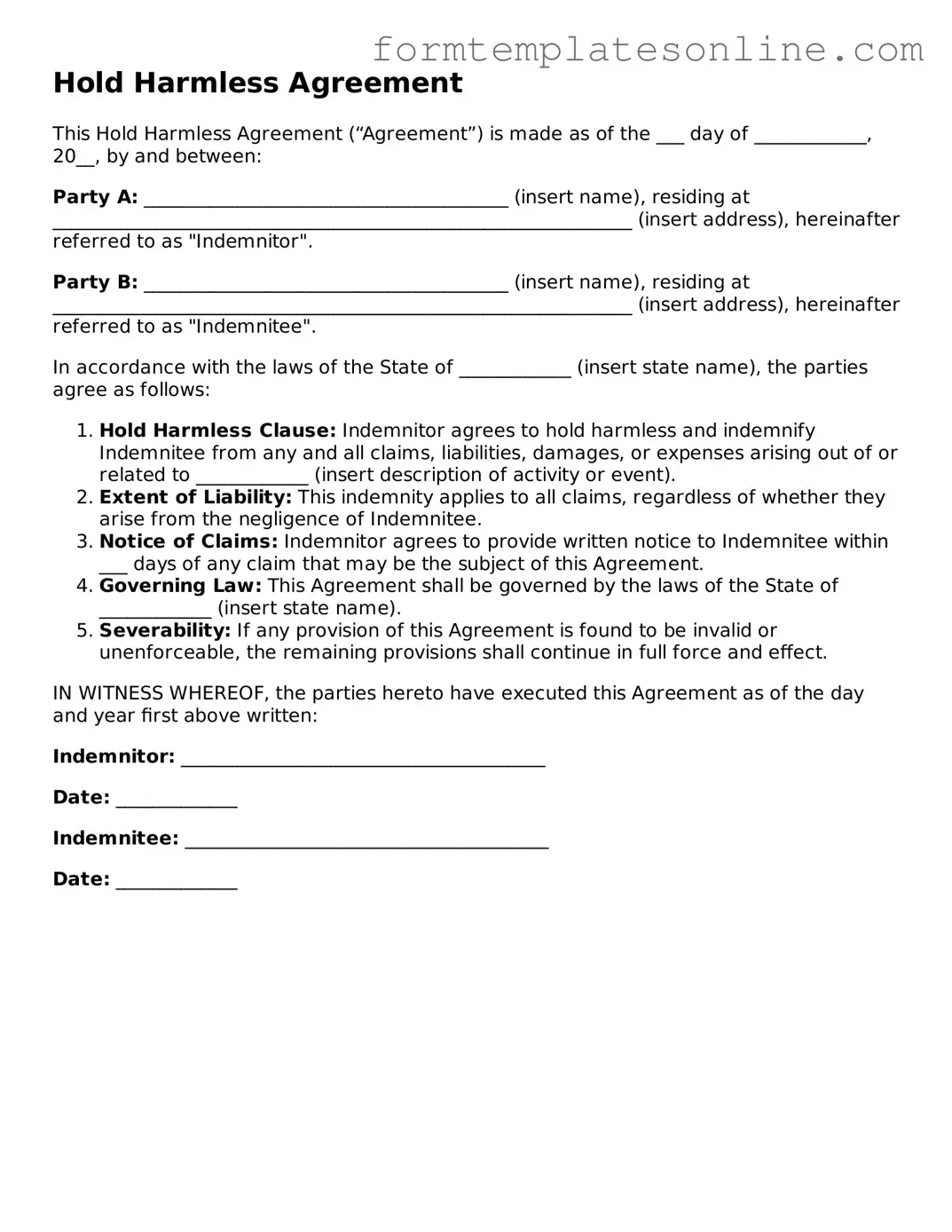Hold Harmless Agreement
This Hold Harmless Agreement (“Agreement”) is made as of the ___ day of ____________, 20__, by and between:
Party A: _______________________________________ (insert name), residing at ______________________________________________________________ (insert address), hereinafter referred to as "Indemnitor".
Party B: _______________________________________ (insert name), residing at ______________________________________________________________ (insert address), hereinafter referred to as "Indemnitee".
In accordance with the laws of the State of ____________ (insert state name), the parties agree as follows:
- Hold Harmless Clause: Indemnitor agrees to hold harmless and indemnify Indemnitee from any and all claims, liabilities, damages, or expenses arising out of or related to ____________ (insert description of activity or event).
- Extent of Liability: This indemnity applies to all claims, regardless of whether they arise from the negligence of Indemnitee.
- Notice of Claims: Indemnitor agrees to provide written notice to Indemnitee within ___ days of any claim that may be the subject of this Agreement.
- Governing Law: This Agreement shall be governed by the laws of the State of ____________ (insert state name).
- Severability: If any provision of this Agreement is found to be invalid or unenforceable, the remaining provisions shall continue in full force and effect.
IN WITNESS WHEREOF, the parties hereto have executed this Agreement as of the day and year first above written:
Indemnitor: _______________________________________
Date: _____________
Indemnitee: _______________________________________
Date: _____________
